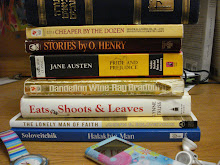 Over the course of this week, I, like my fellow Jews all over the world, have been dutifully shaking my palm fronds and citron each day. But as I was doing so, I felt that something was lacking. I realized that I didn’t know what to be thinking about while performing this somewhat strange commandment. I mean, when I sit in the sukkah I know exactly what I should be thinking: I should be focusing on commemorating our experience in the midbar, and recognizing human vulnerability and God’s protection. When I hear shofar, I know what I should be thinking: wake up, do teshuva. When I drink four cups of wine: I am demonstrating my freedom, freedom given us by our miraculous redemption from
Over the course of this week, I, like my fellow Jews all over the world, have been dutifully shaking my palm fronds and citron each day. But as I was doing so, I felt that something was lacking. I realized that I didn’t know what to be thinking about while performing this somewhat strange commandment. I mean, when I sit in the sukkah I know exactly what I should be thinking: I should be focusing on commemorating our experience in the midbar, and recognizing human vulnerability and God’s protection. When I hear shofar, I know what I should be thinking: wake up, do teshuva. When I drink four cups of wine: I am demonstrating my freedom, freedom given us by our miraculous redemption from I was discussing this issue with a very wise friend, and we came upon an insight that has really helped me understand this mitzvah better. (I have no outside source for this, so feel free to correct me if something is inaccurate or, if you know of one, to cite a real source to back this up.)
If you read the yehi ratzon that is said before bensching lulav (printed in the Artscroll siddur), it describes the act of taking the four species as a means of bringing together the four letters of Hashem’s name “in perfect unity.” (Kabbalah identifies each of the arbah minim with one of the letters of Hashem’s name). This explanation of the mitzvah is similar to the other two already mentioned, in that all three are based on the idea of unification. This indicates that, in whatever sense, this is the underlying purpose of taking the lulav and etrog—the bringing together of different components to form one unified whole.
This is also an important part of the theme of the holiday of Sukkot. Hashem’s protection in the midbar was an experience shared by all the Jews together, as a unified whole. The holiday itself equalizes people, bringing everyone out of our respective mansions or houses or apartments into pretty much equal huts. Also, according to Zechariah (14:16-19) in the time of moshiach Sukkot will bring an even more expanded type of unity, as it will become a universal festival, where even the goyim will come to Yerushalayim to worship Hashem.
The holiday of Sukkot is all about unity, and the lulav and etrog express that idea—bringing different components together—whether they represent the letters of Hashem’s name, parts of the human body, or types of people in the world.

2 comments:
Great post!
Achdus is what its all about!
I must email you my sem dvar Torah from last week...it addressed the same question you did, and went really in detail along the same theme for the answer. It's a bit non-linear, but you might like it. I had always had the same question!
See you soon!
Post a Comment